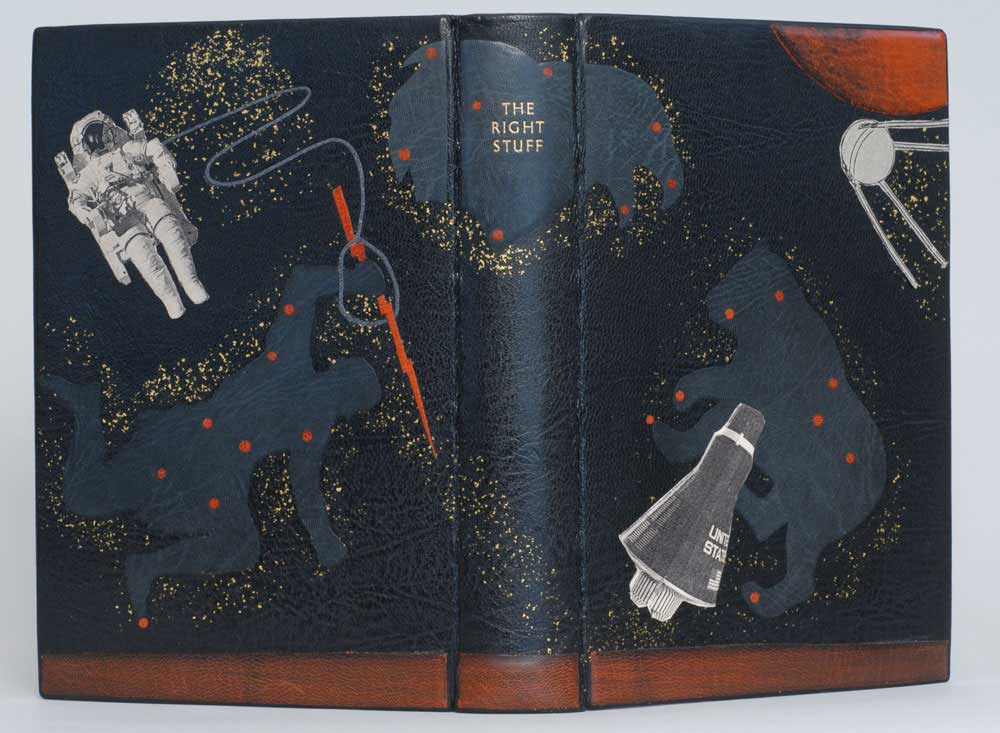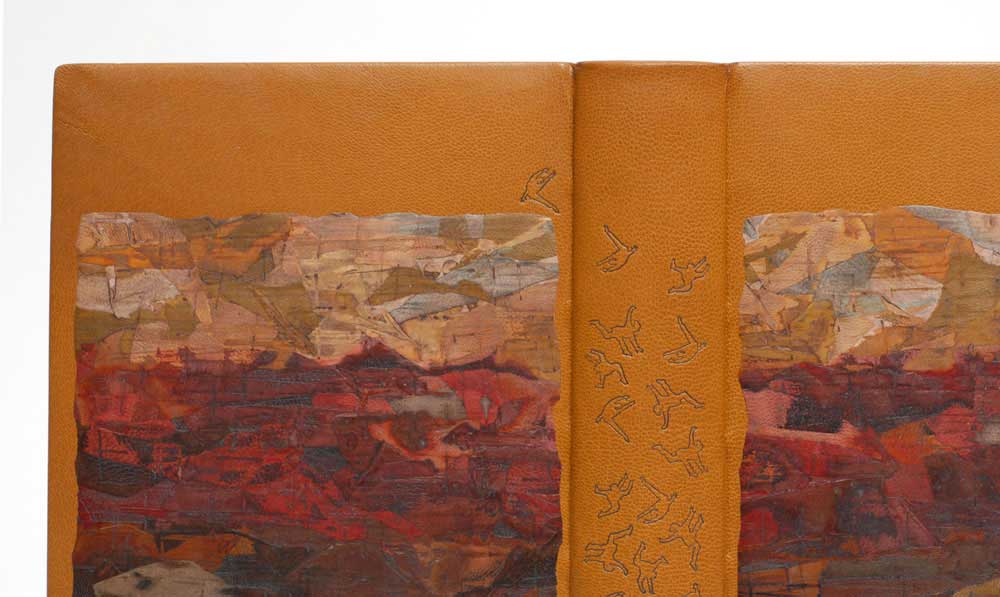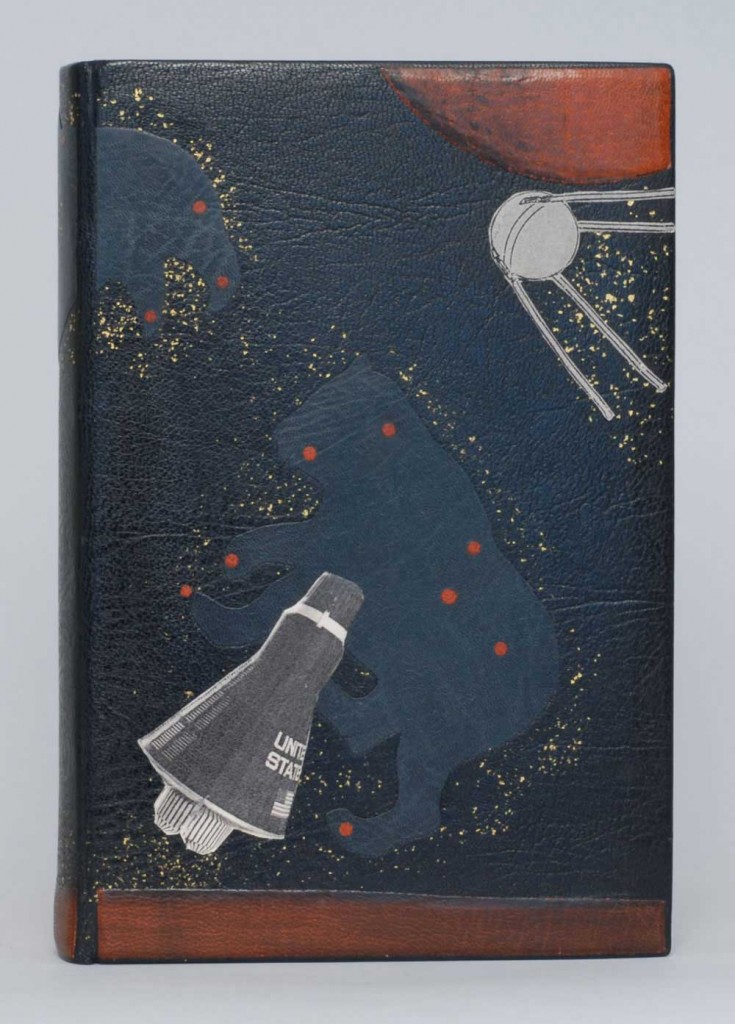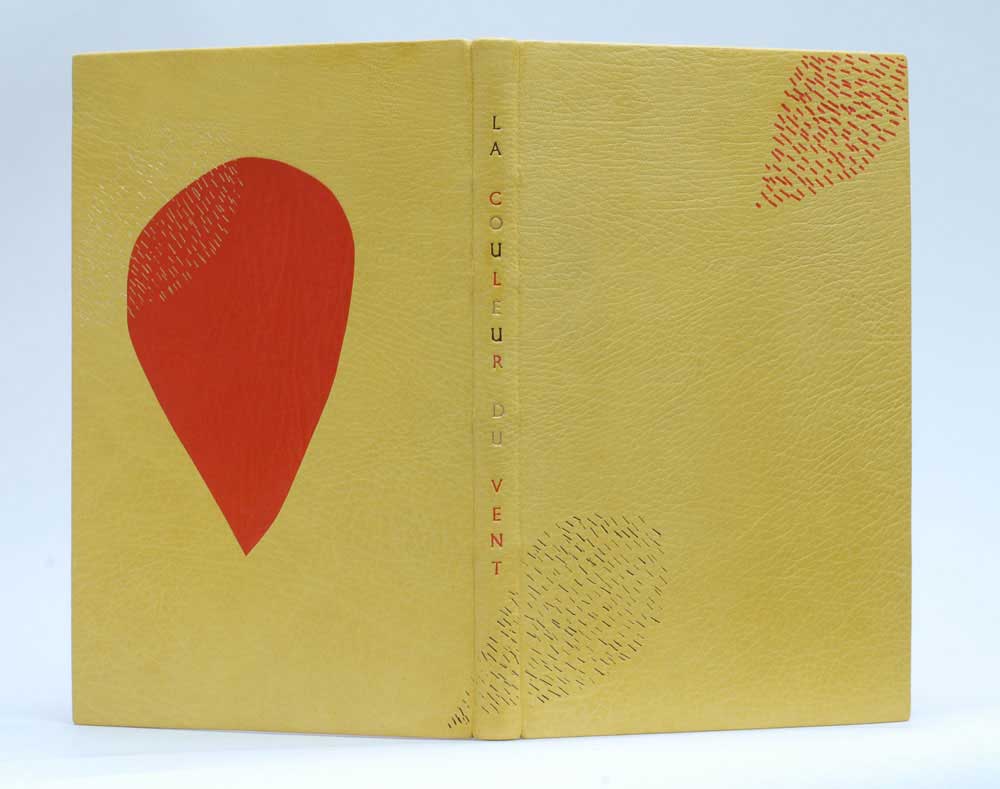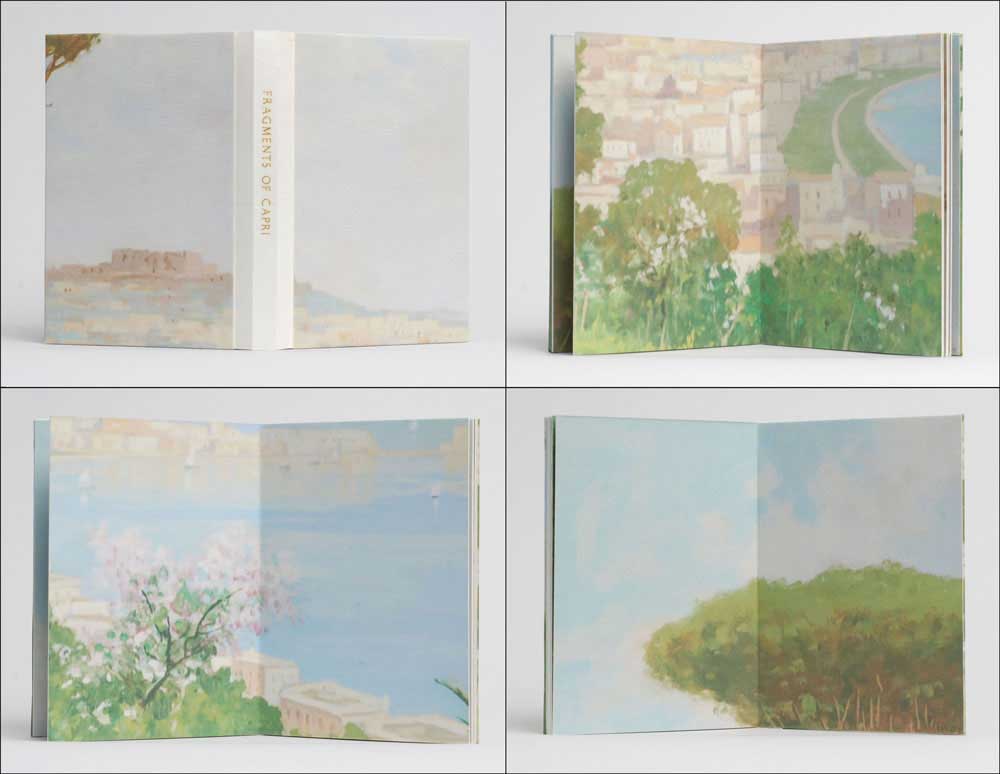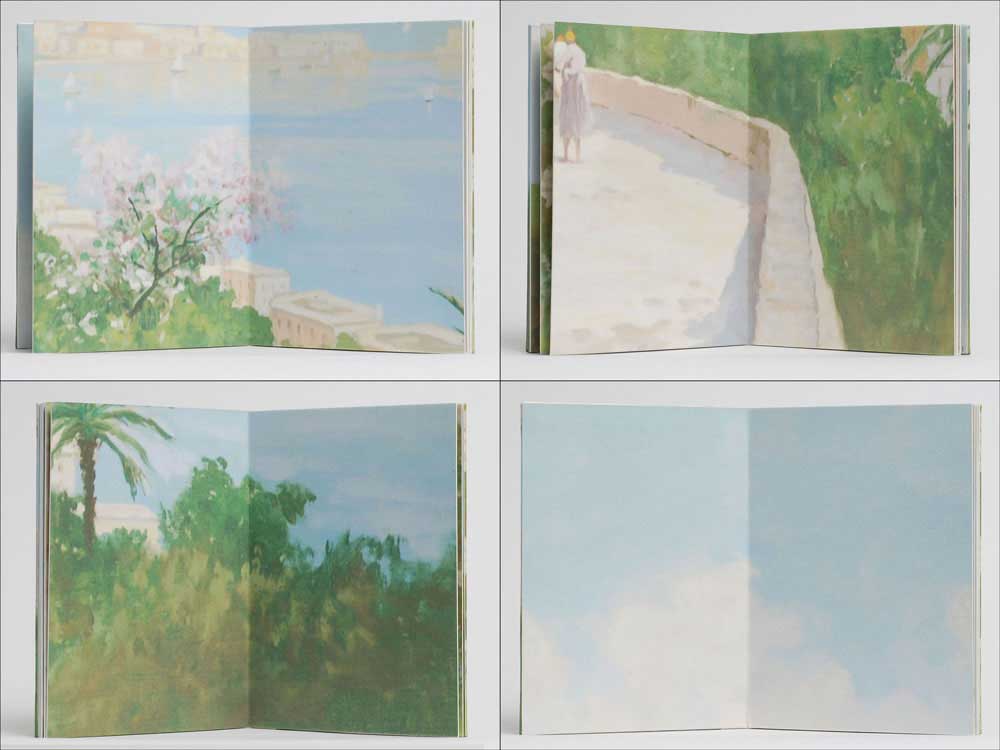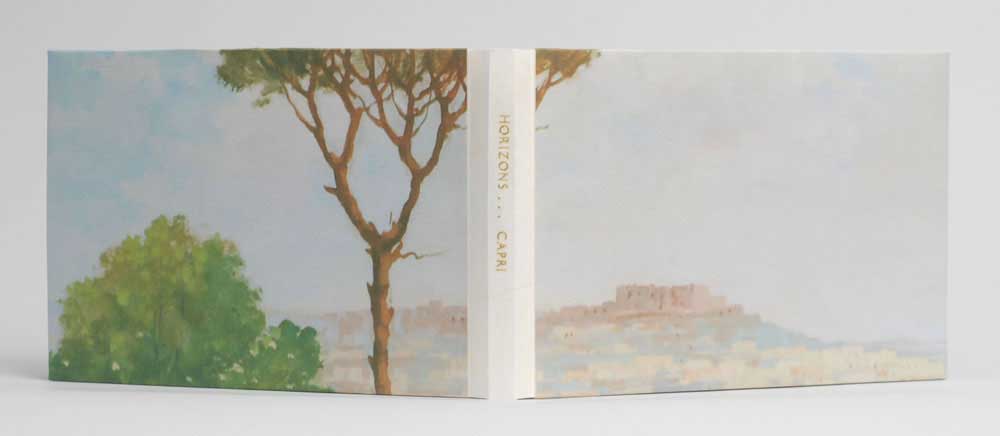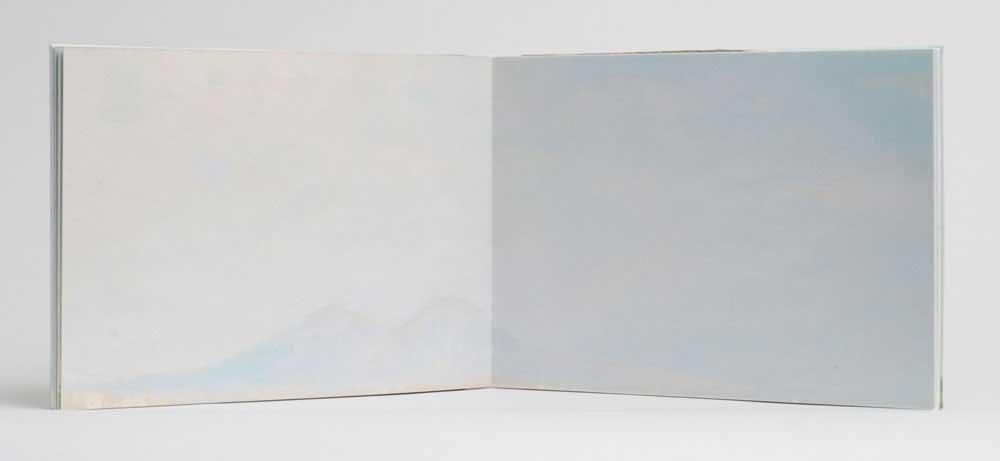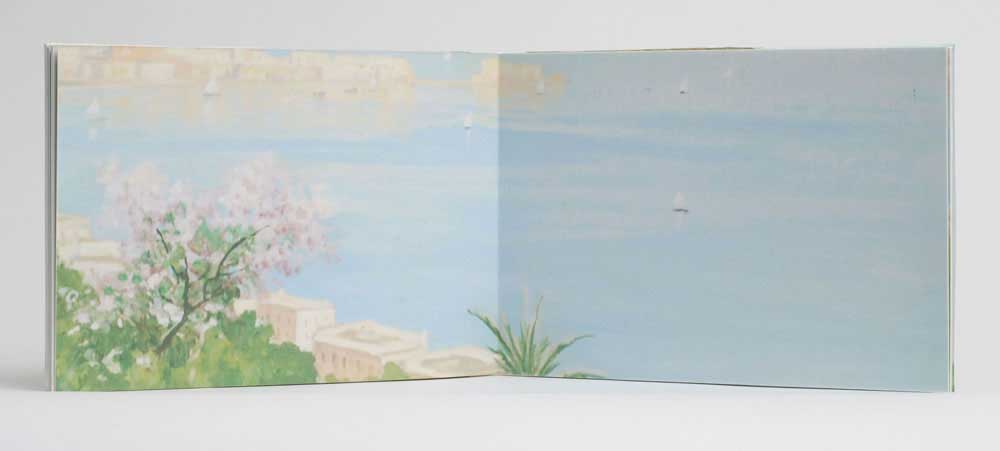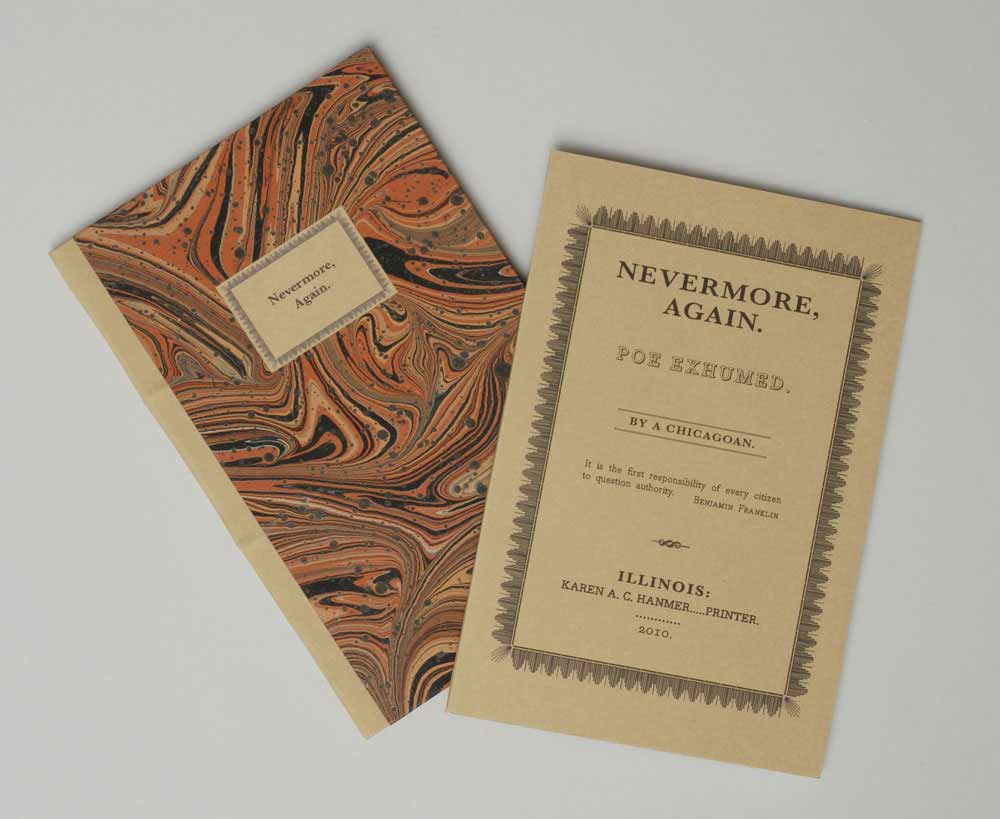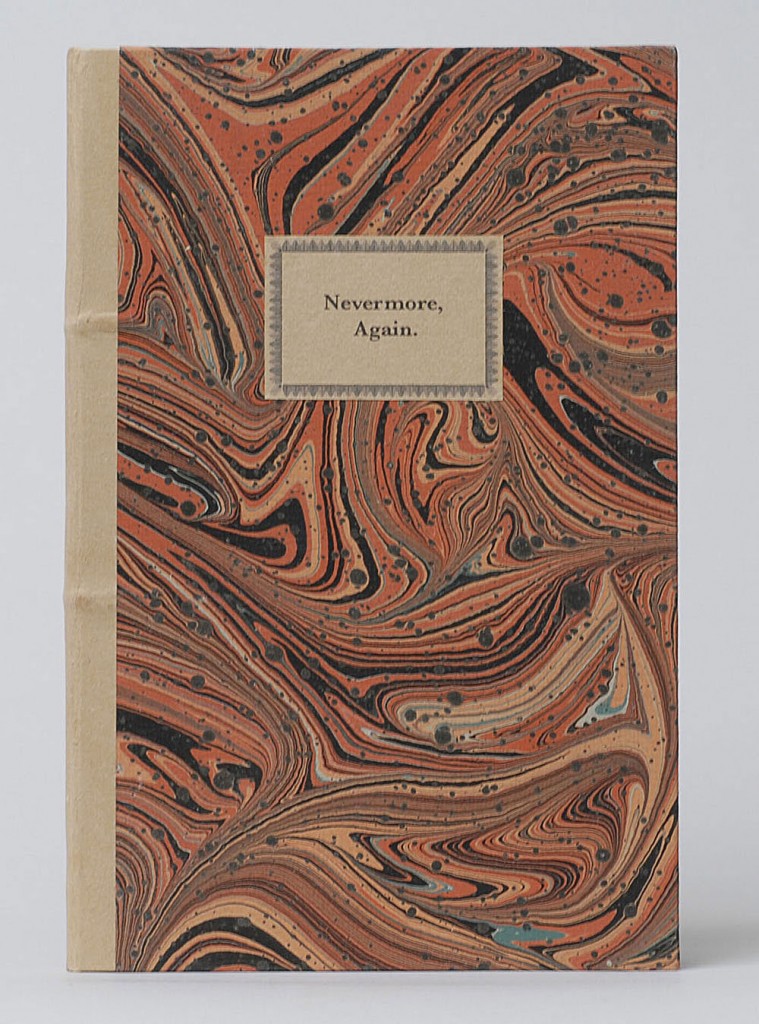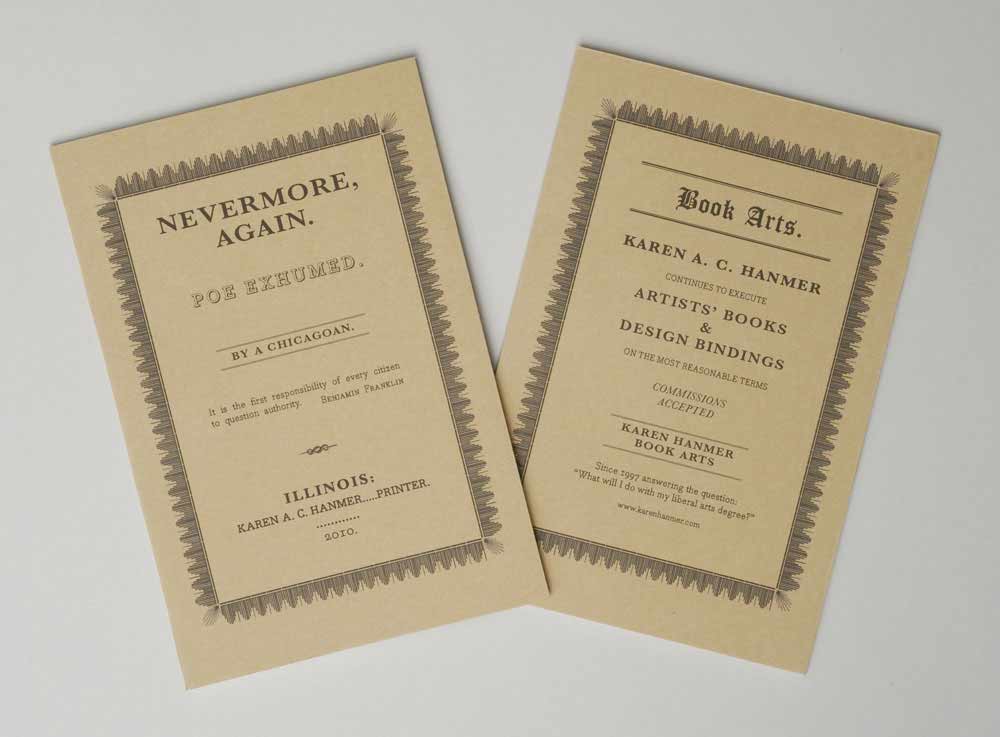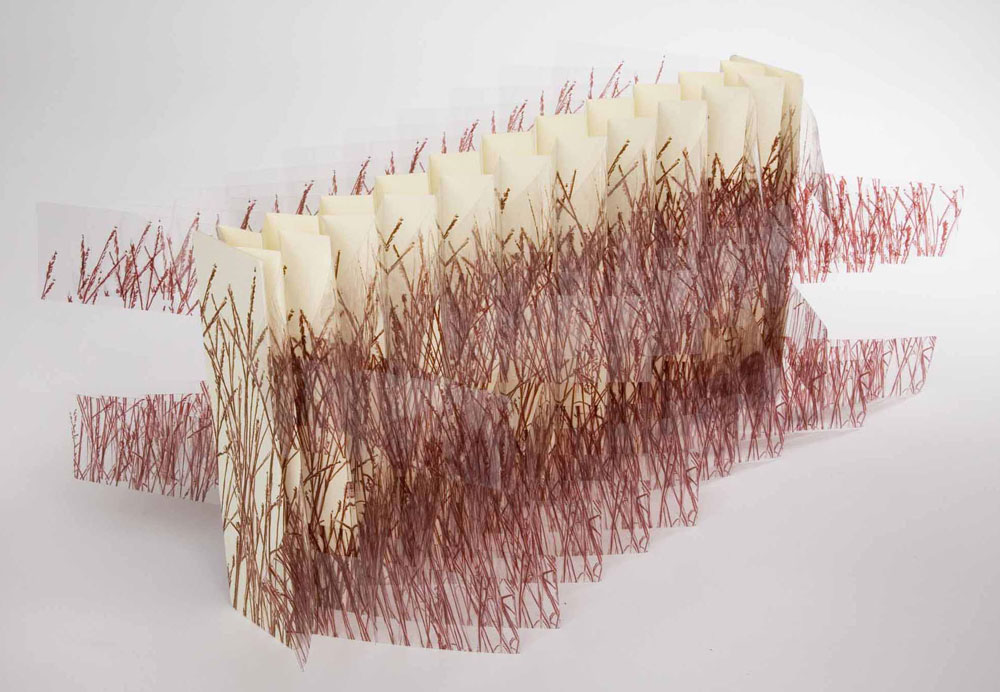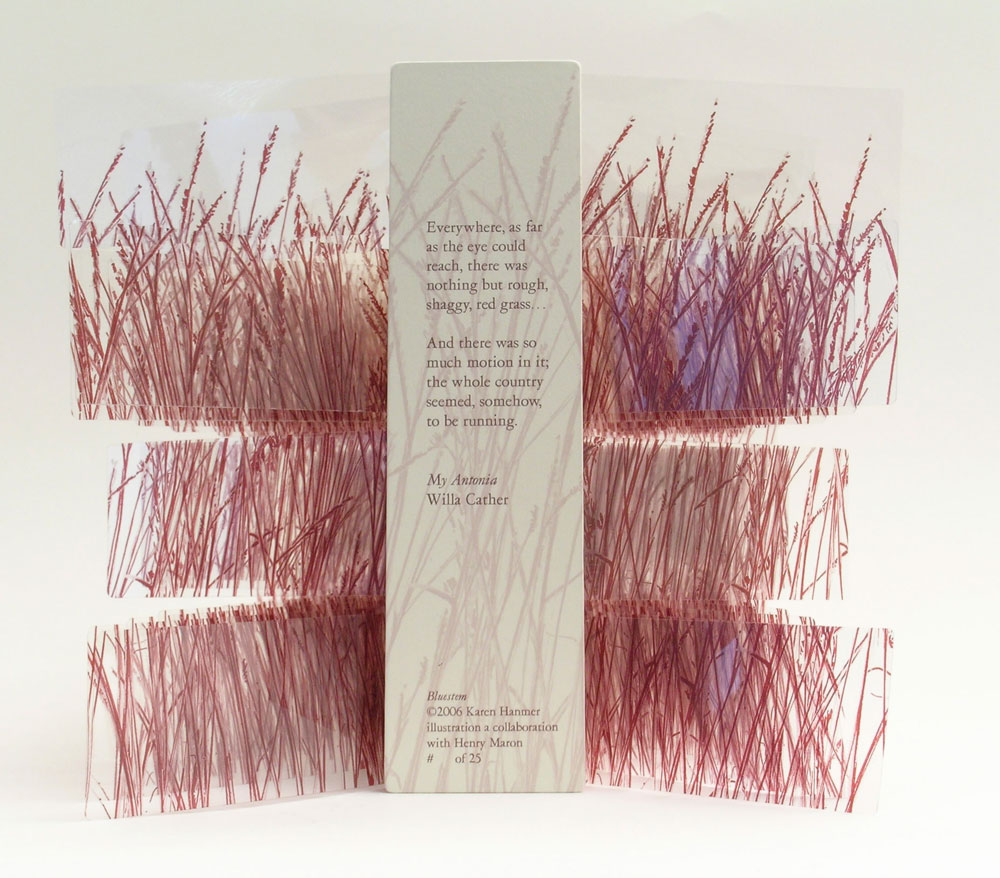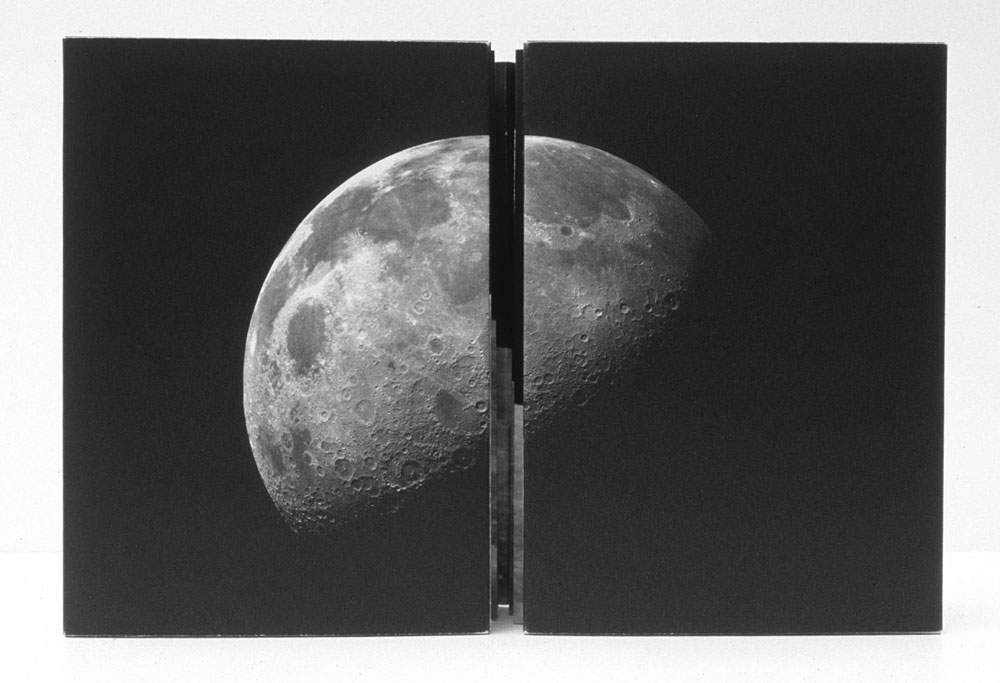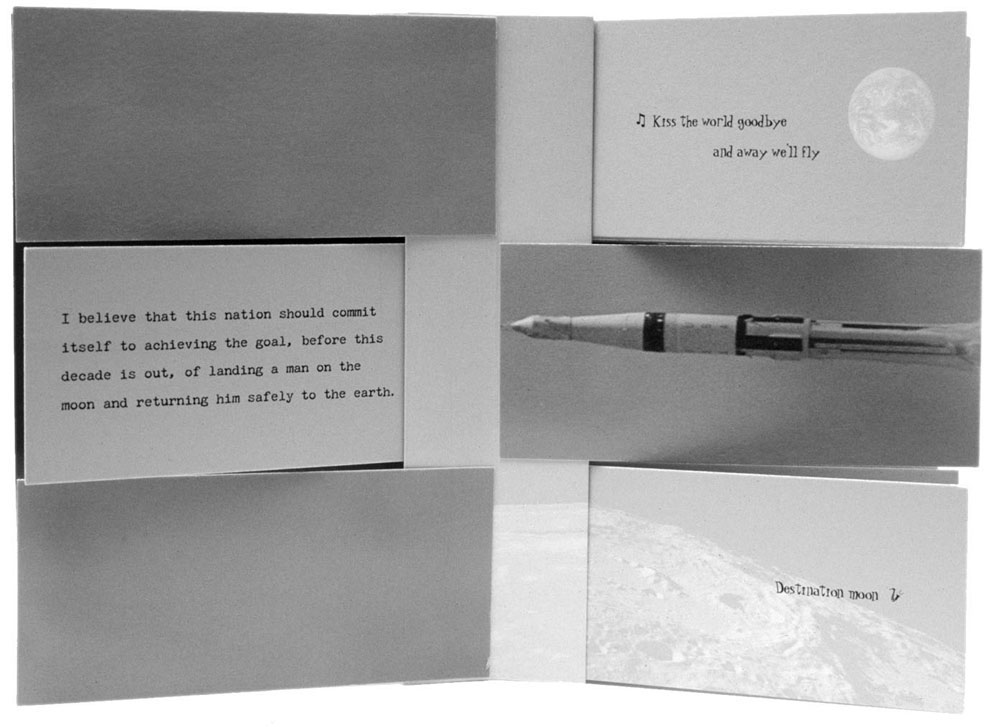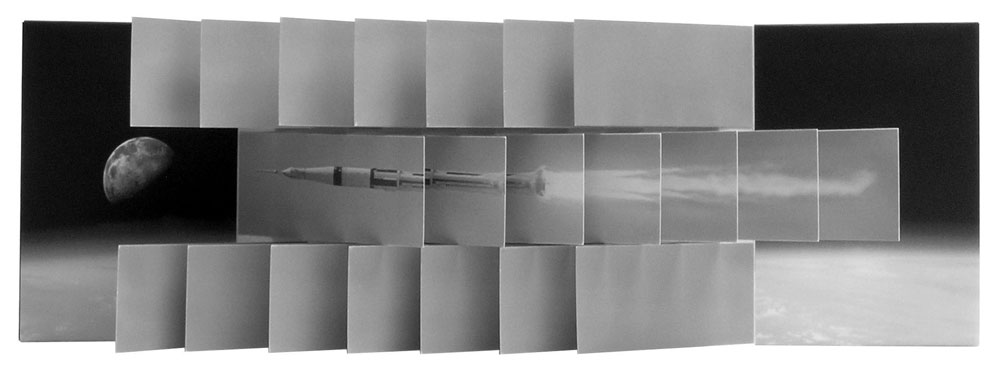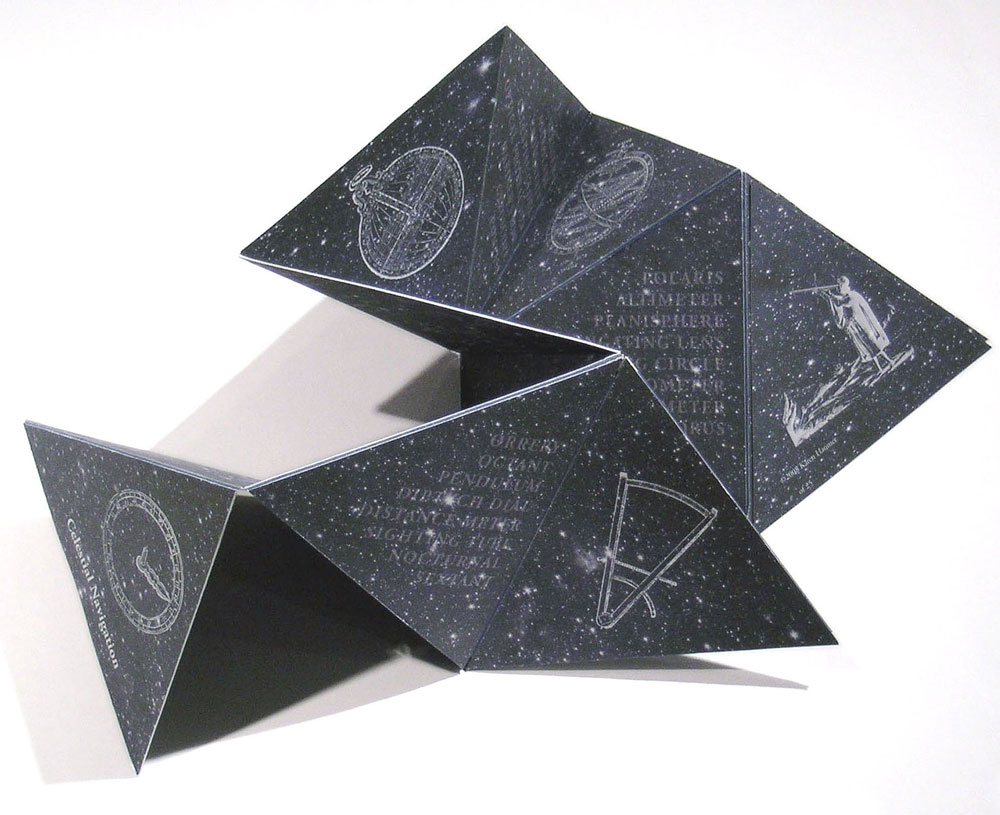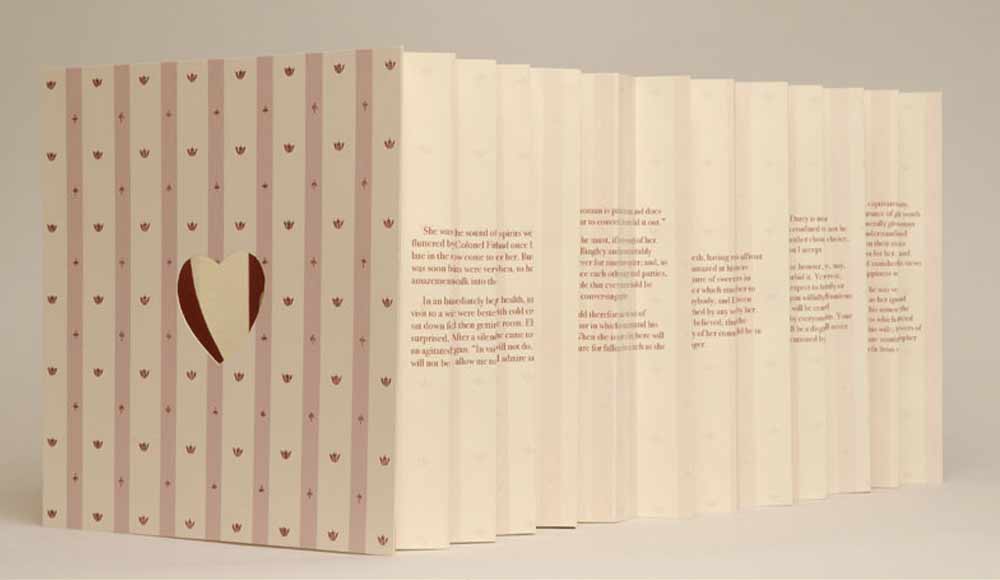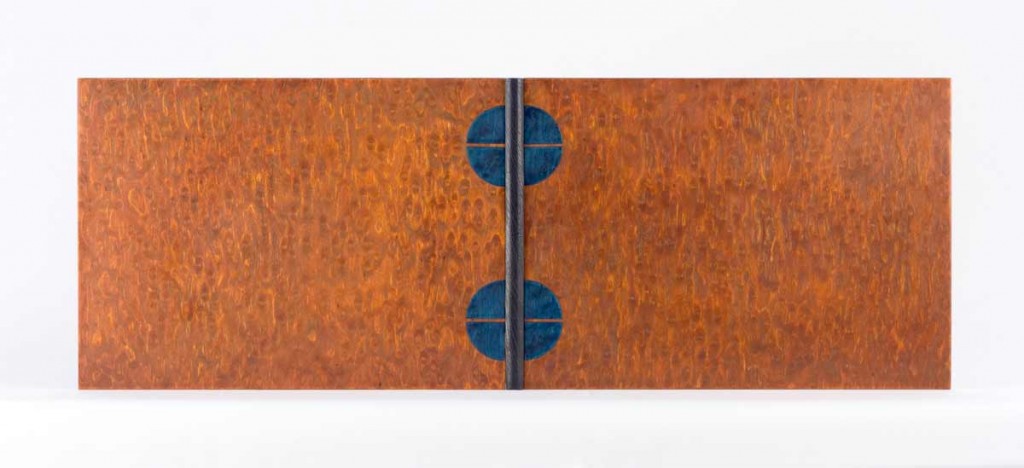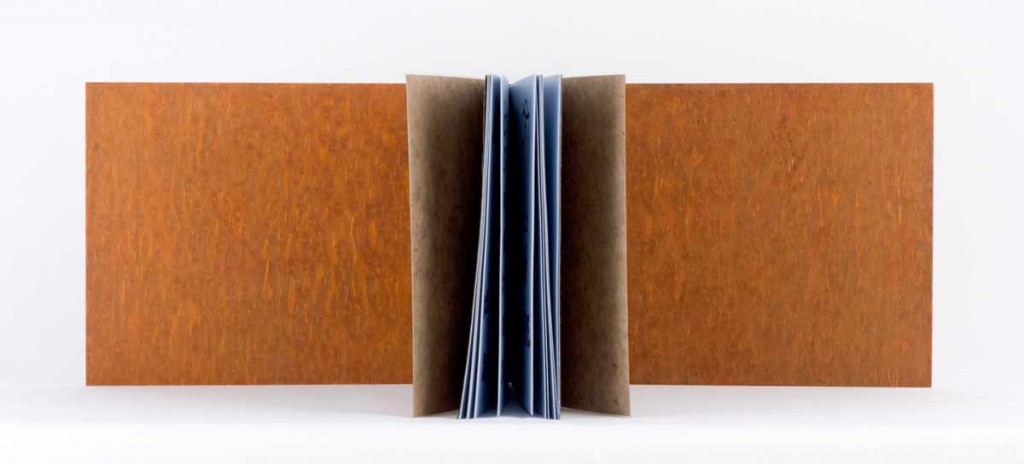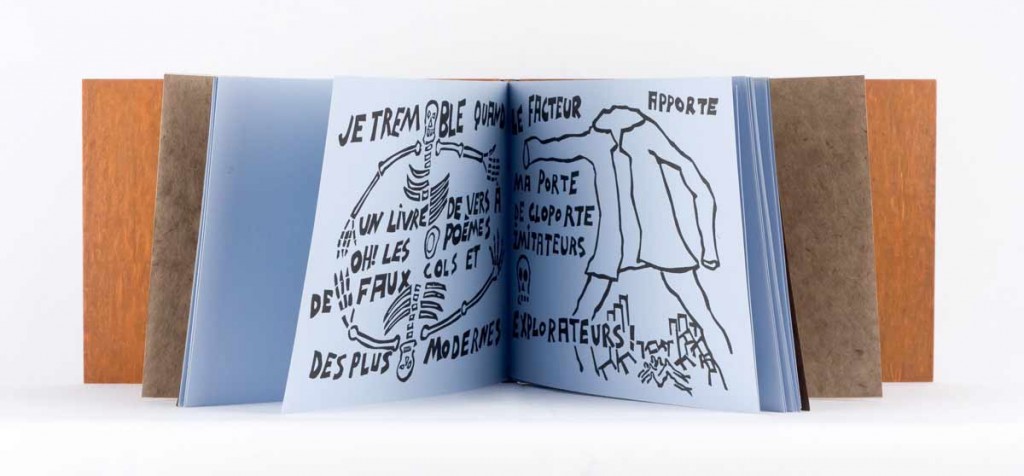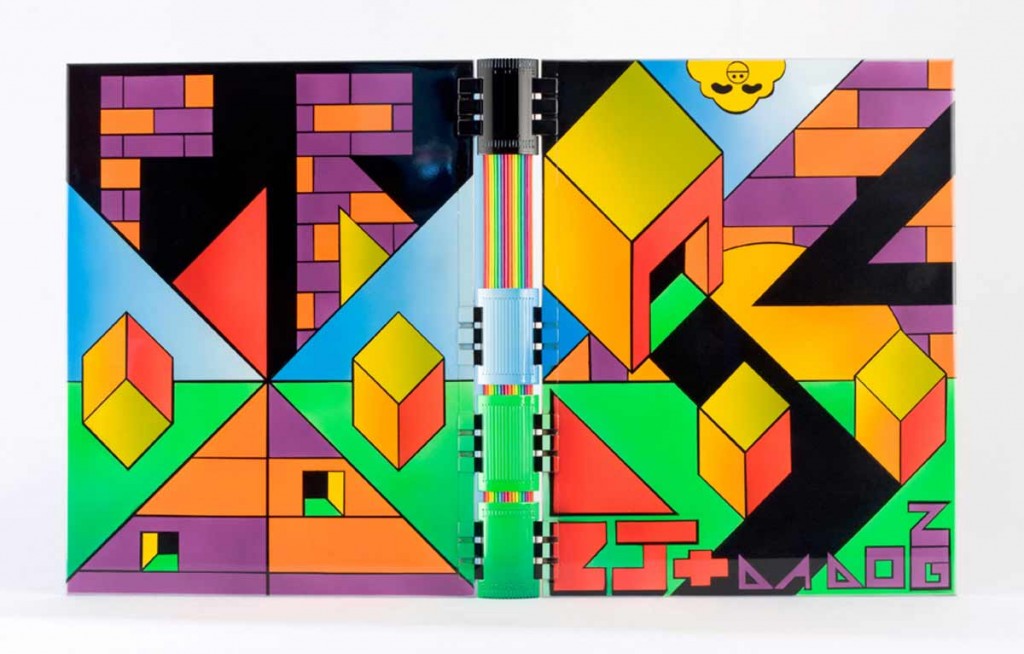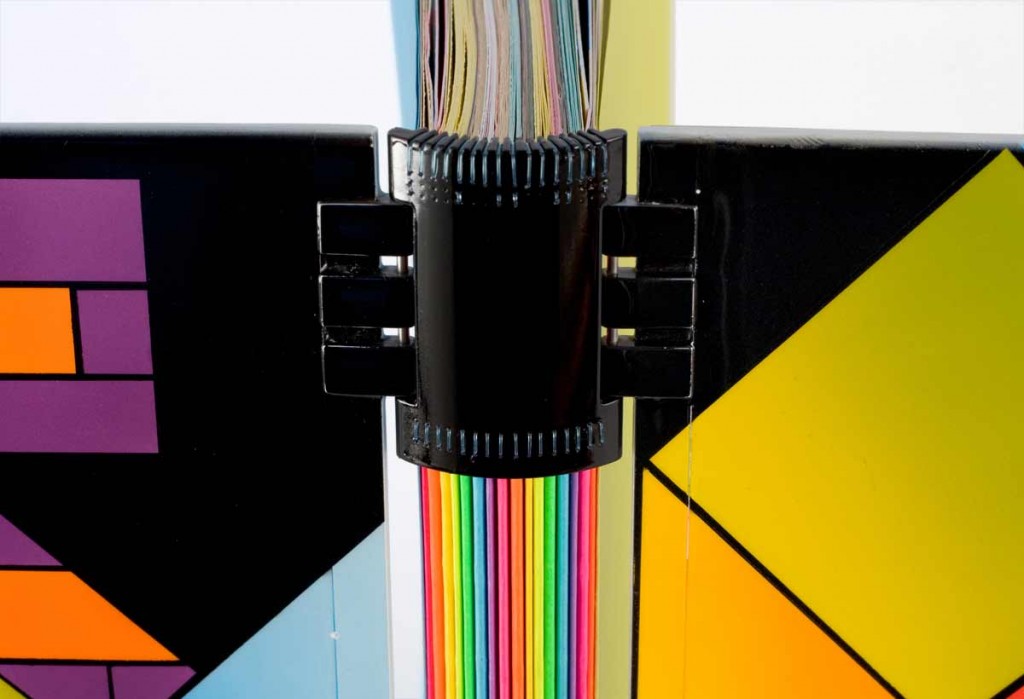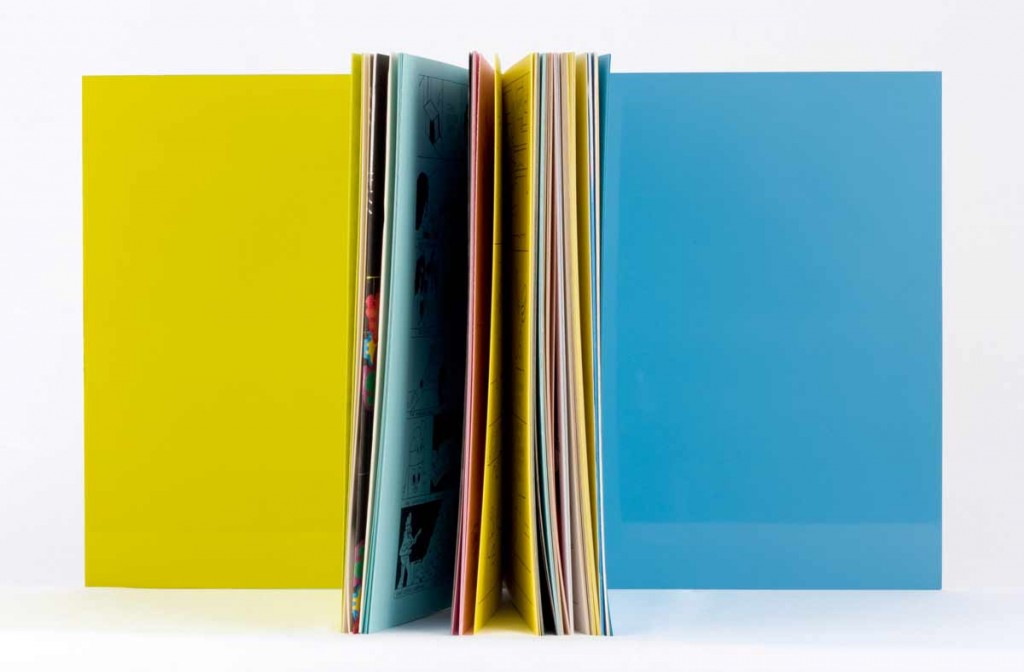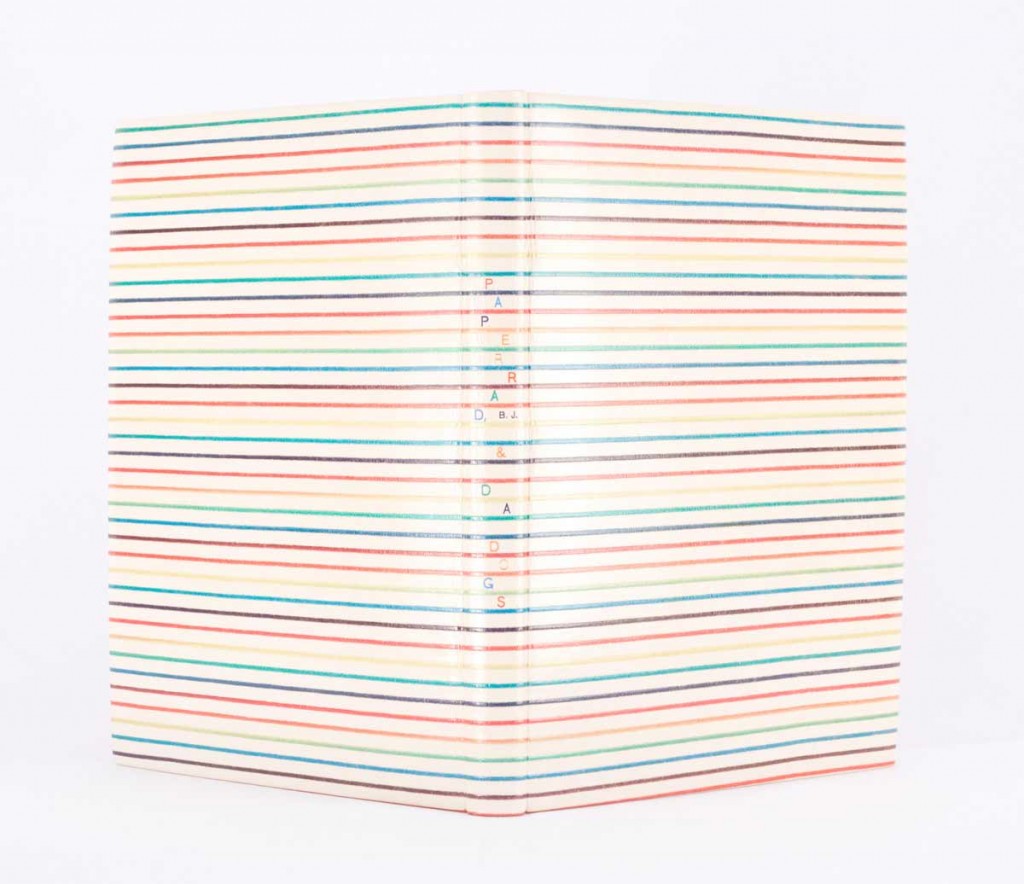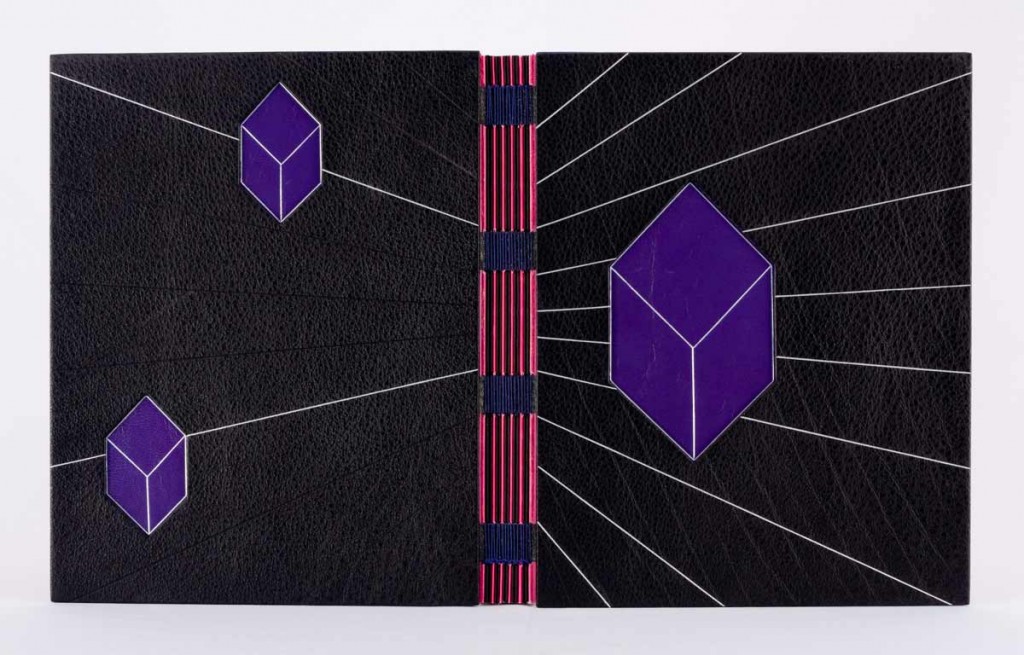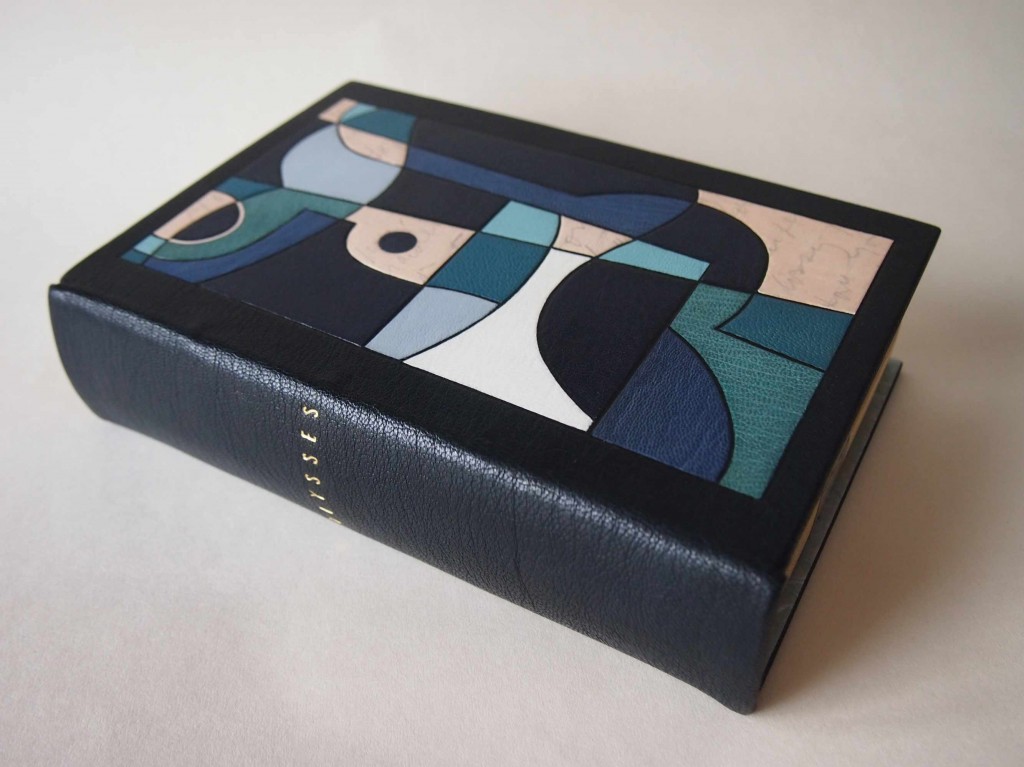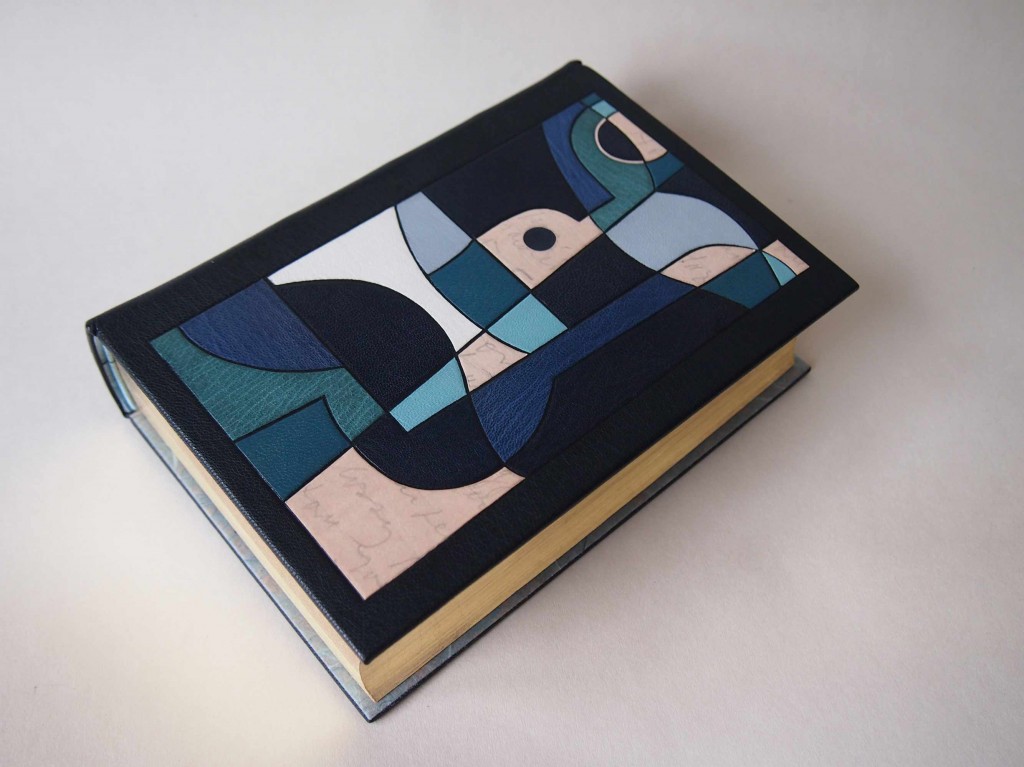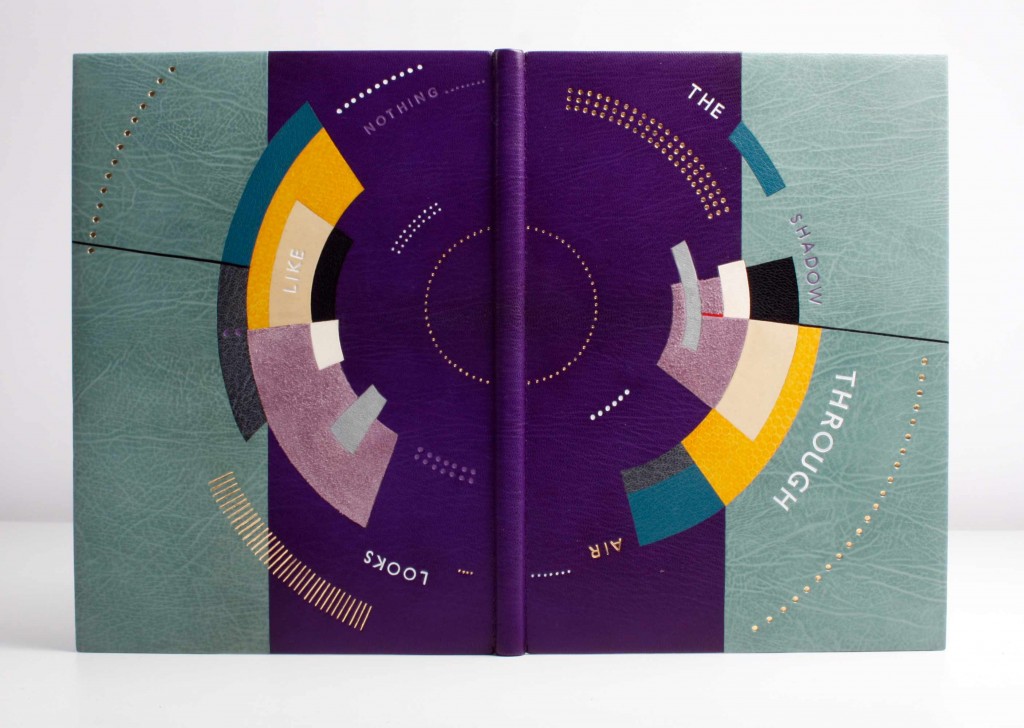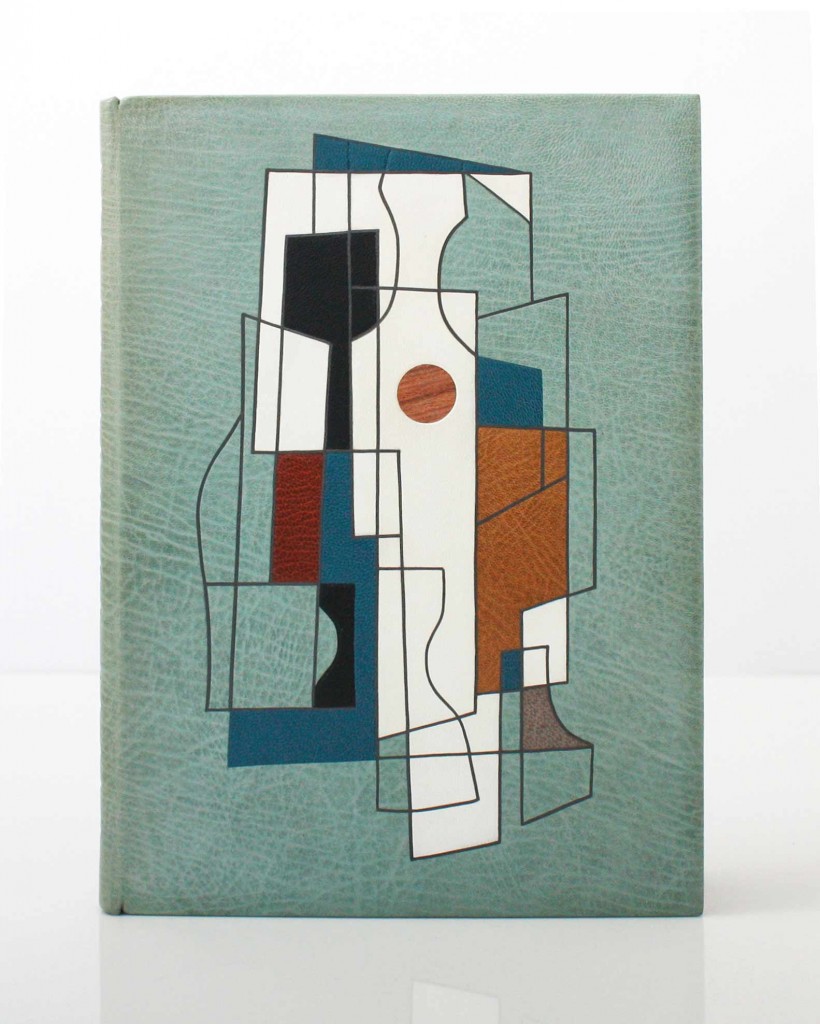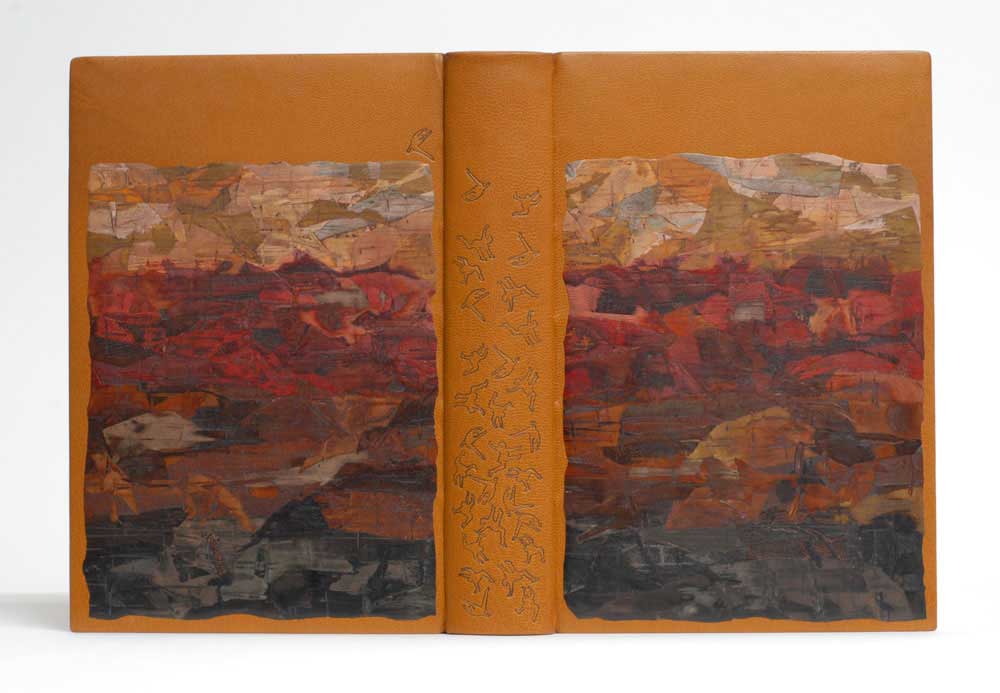 It was so hard to narrow down just 5 pieces from Karen Hanmer’s portfolio to feature during the month of December. So I present this bonus post, which includes 2 additional bindings, to wrap up both Karen’s feature and the interview segment for 2013.
It was so hard to narrow down just 5 pieces from Karen Hanmer’s portfolio to feature during the month of December. So I present this bonus post, which includes 2 additional bindings, to wrap up both Karen’s feature and the interview segment for 2013.
Over the Edge: Death in Grand Canyon (by Thomas M. Myers and Michael P. Ghiglieri) may be the reason why I first began to admire Karen Hanmer’s work and how I fell in love with the lacunose technique. This French-style fine binding is covered in full goatskin and features two large goatskin lacunose onlays. The tumbling figures are tooled in gold using custom brass tools, both on the covers, spine and edge-to-edge doublures, which have left a mirrored impression on the suede flyleaves (which you can see here).
After visiting with Karen in her home bindery, I attended the One Book, Many Interpretations exhibit at the Chicago Public Library in 2011. I had just been treated to handling some of Karen’s earlier works, that I was so awed by her recent fine binding of The Right Stuff by Tom Wolfe. Karen employs so many techniques on this binding, but every part is flawlessly executed into a harmonious composition.
Bound as a French-style fine binding in full goatskin with back-pared and cushioned onlays; some laser-printed. Sprinkled gold leaf creates a cosmic stream across the boards. The edges are decorated with graphite and sprinkled with gold leaf.
These two bindings are amongst my favorites within your portfolio. The techniques you employed made for quite striking designs. Can you discuss the lacunose technique and using laser-printed onlays?
I don’t draw, paint, airbrush, or do any kind of traditional printmaking, so to get imagery into my designs, I use the computer, or in the case of lacunose, brute force.
I saw Paul Delrue present the lacunose technique at the Guild of Book Workers meeting in 2005. Thin bits of leather are adhered to a substrate or directly to the book, sanded, a PVA wash is applied and dried, and the leather is sanded again. More bits of leather can be applied, tooling can add additional texture, and color can be added to the wash to alter the tone. This process is repeated numerous times with finer and finer sandpaper, then finished with beeswax on a cloth.
Laser-printing on leather is a technique I learned from Peter Verheyen. Pare leather to onlay thickness, paste it to tissue, dry flat. Print the desired image first onto paper so you can properly position the leather. Place the leather over the image just printed on the paper, and tape down the leading edge. Make a second laser print, this time on the leather. After the print is cool, fix the image with a protective coating. I use Cellugel. Krylon spray will also work, and SC6000 or Renaissance wax will probably work also, but be careful not to rub the toner off the surface as you rub on the protective coating. Then remove the leather from the copier paper and proceed to use the printed leather as an onlay or inlay.
– – – – – – – – – –
I want to thank Karen again for such a wonderful and thoughtful interview!
